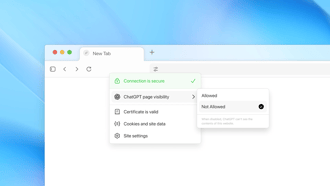In the world of medical imaging, perfection isn't always perfect. Sometimes, deliberately adding imperfections—specifically, a type of statistical noise known as Gaussian noise—can actually make AI diagnostic systems more reliable and effective. This seemingly counterintuitive approach is revolutionizing how we train artificial intelligence for medical image analysis.
The Noise Paradox in Medical Imaging
When you visit a hospital for an MRI or CT scan, the resulting images are never completely pristine. Different scanner models, varying acquisition settings, and the inherent limitations of imaging technology all introduce subtle variations—noise—into your medical images.
This presents a fundamental challenge for AI systems designed to analyze these images. An AI trained exclusively on clean, ideal images from a single scanner type will often fail when confronted with the natural variations found in real-world clinical settings.
Comparison between an original medical image and the same image with Gaussian noise applied
Why Adding Noise Makes AI Smarter
Think of it like training a medical student. If they only study textbook examples of a condition, they might struggle to identify that same condition when it presents differently in actual patients. Similarly, AI systems need exposure to variety during their "education."
When we deliberately introduce Gaussian noise during the AI training process, we're essentially teaching the system to focus on the fundamental patterns that matter while ignoring superficial variations. This statistical technique acts as a form of "averaging," helping the AI distinguish between:
- Essential diagnostic features (like the characteristic shape of a tumor)
- Irrelevant variations (like minor differences in image quality between scanners)
This noise-augmented training leads to more robust models that perform consistently across diverse healthcare settings, regardless of equipment variations.
Real-World Impact
The effectiveness of this approach isn't just theoretical. A recent study published in Artificial Intelligence Review demonstrated that augmentation methods, including Gaussian noise addition, significantly improved the accuracy of tumor segmentation and classification algorithms.
The practical value of noise augmentation is further validated through competitive benchmarks like the Ultrasound Nerve Segmentation Challenge and UW-Madison GI Tract Image Segmentation competition on Kaggle, where top-performing solutions frequently employ noise augmentation strategies.
Beyond Medical Imaging
The principle of using controlled noise to improve AI performance extends beyond healthcare. Similar techniques help improve:
- Self-driving car systems that must function in varying weather conditions
- Voice recognition software that needs to understand different accents
- Facial recognition that works consistently under different lighting conditions
The Future of Noise-Enhanced AI
As medical imaging continues to evolve, the strategic application of Gaussian noise during AI training will remain a crucial technique for developing reliable diagnostic tools. The next frontier involves adaptive noise models that can be precisely calibrated to the specific characteristics of different imaging modalities and clinical contexts.
In the paradoxical world of medical AI, a little noise doesn't just add character—it adds intelligence. To effectively leverage noise-augmentation strategies and ensure your AI models remain robust and reliable, consider partnering with CloudFactory. With deep expertise in AI data training, CloudFactory can help your organization harness these innovative techniques to achieve superior results in medical imaging and beyond.
This article is part of our "Peek into the Industry" series exploring how AI techniques improve real-world AI applications.
.png?width=1563&height=1563&name=Untitled%20design%20(38).png)




.png?width=1563&height=1563&name=Untitled%20design%20(30).png)



.png?width=1563&height=1563&name=Untitled%20design%20(33).png)


.png?width=1563&height=1563&name=Untitled%20design%20(34).png)













